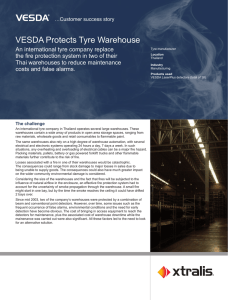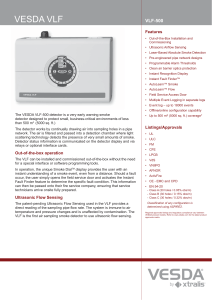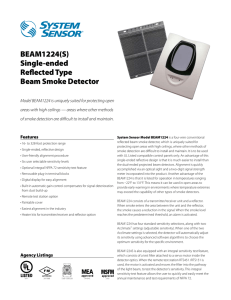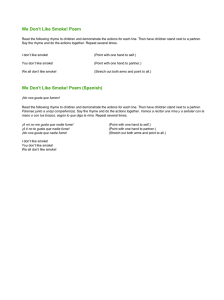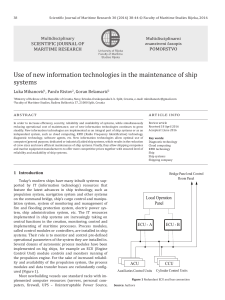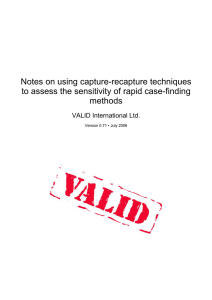Cutty Sark
Anuncio
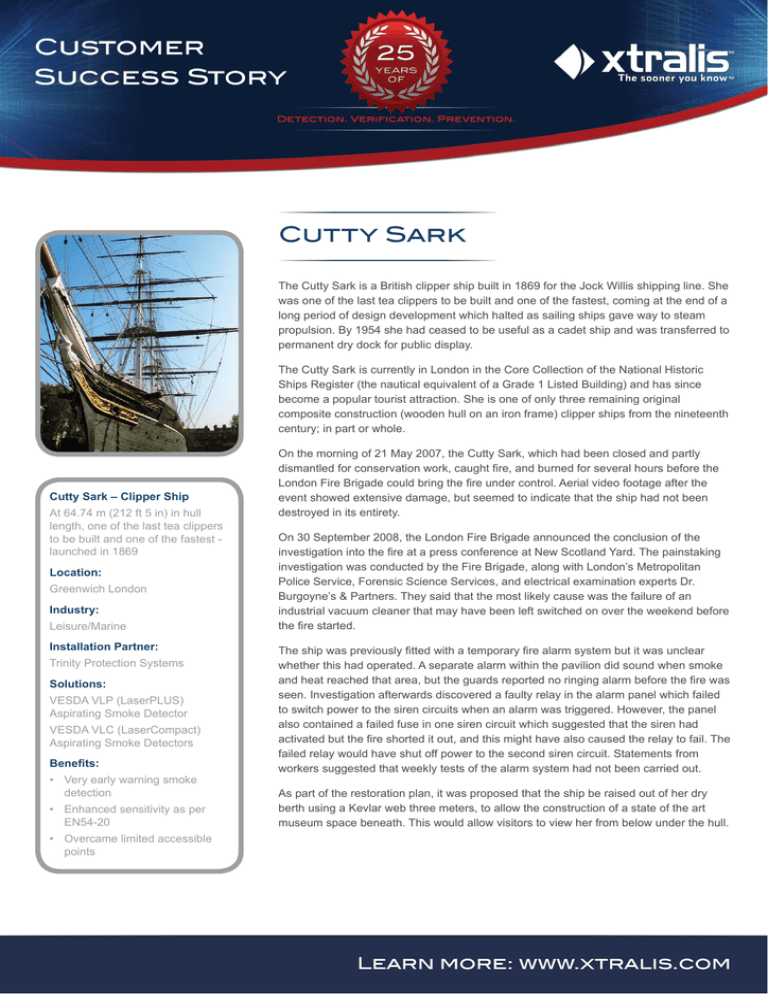
Cutty Sark The Cutty Sark is a British clipper ship built in 1869 for the Jock Willis shipping line. She was one of the last tea clippers to be built and one of the fastest, coming at the end of a long period of design development which halted as sailing ships gave way to steam propulsion. By 1954 she had ceased to be useful as a cadet ship and was transferred to permanent dry dock for public display. The Cutty Sark is currently in London in the Core Collection of the National Historic Ships Register (the nautical equivalent of a Grade 1 Listed Building) and has since become a popular tourist attraction. She is one of only three remaining original composite construction (wooden hull on an iron frame) clipper ships from the nineteenth century; in part or whole. Cutty Sark – Clipper Ship At 64.74 m (212 ft 5 in) in hull length, one of the last tea clippers to be built and one of the fastest launched in 1869 Location: Greenwich London Industry: Leisure/Marine Installation Partner: Trinity Protection Systems Solutions: VESDA VLP (LaserPLUS) Aspirating Smoke Detector VESDA VLC (LaserCompact) Aspirating Smoke Detectors Benefits: • Very early warning smoke detection • Enhanced sensitivity as per EN54-20 On the morning of 21 May 2007, the Cutty Sark, which had been closed and partly dismantled for conservation work, caught fire, and burned for several hours before the London Fire Brigade could bring the fire under control. Aerial video footage after the event showed extensive damage, but seemed to indicate that the ship had not been destroyed in its entirety. On 30 September 2008, the London Fire Brigade announced the conclusion of the investigation into the fire at a press conference at New Scotland Yard. The painstaking investigation was conducted by the Fire Brigade, along with London’s Metropolitan Police Service, Forensic Science Services, and electrical examination experts Dr. Burgoyne’s & Partners. They said that the most likely cause was the failure of an industrial vacuum cleaner that may have been left switched on over the weekend before the fire started. The ship was previously fitted with a temporary fire alarm system but it was unclear whether this had operated. A separate alarm within the pavilion did sound when smoke and heat reached that area, but the guards reported no ringing alarm before the fire was seen. Investigation afterwards discovered a faulty relay in the alarm panel which failed to switch power to the siren circuits when an alarm was triggered. However, the panel also contained a failed fuse in one siren circuit which suggested that the siren had activated but the fire shorted it out, and this might have also caused the relay to fail. The failed relay would have shut off power to the second siren circuit. Statements from workers suggested that weekly tests of the alarm system had not been carried out. As part of the restoration plan, it was proposed that the ship be raised out of her dry berth using a Kevlar web three meters, to allow the construction of a state of the art museum space beneath. This would allow visitors to view her from below under the hull. • Overcame limited accessible points Learn more: www.xtralis.com “ This design change posed some challenges when selecting a fire detection system. The unit would need to offer a discrete system coupled with an early level of alarm. Also, the shape of the ship and the new enclosed, glazed, surround structure to the ship meant limited accessible points. Trinity Protection Systems were awarded the contract to install the fire protection system. Their extensive knowledge of smoke detection systems led them to choose VESDA – the only system that addressed all of the concerns that came with the new design as well as offered an enhanced sensitivity factor per EN54-20. prestigious project. Our team, and A VESDA VLP unit was used for the glazed surround area of the exhibition with both the unit and sampling pipe network was installed discreetly out of site to visitors while two VESDA VLC units were installed on the ship itself. The detectors cover the exhibition and ship, which are divided into zones, actively and continuously monitoring the air, looking for any presence of smoke. High-efficiency aspirators draw air from 68 sampling points to the detectors via a network of VESDA ABS pipe, meeting the requirements of EN54-20. Trinity worked with Xtralis and their design tools to provide the very best client solution for this most importantly, the client, are very happy with the total solution that the VESDA system provides.” — Rob Holliday Director Trinity Protection Systems The VESDA equipment is designed to detect a fire at the earliest (incipient) stage before smoke is visible to human eyes. Display panels would give guards the earliest possible warning—early enough for them to find and control a potential fire source before smoke damaged the contents of the ship. More importantly, the VESDA system is an enhanced sensitivity set up meeting Class B under EN54-20 standards. Compatible with standard fire alarm panels, every VESDA system can be programmed at installation to achieve the desired sensitivity, without nuisance alarms. Trinity Protection Systems Trinity has over 20 years in specializing in the design, provision and aftercare of fire detection, fire suppression and electronic security systems. The group operates within an ISO9001:2008 accredited quality control environment and also has LPS1014 3rd Party accreditation. For more information, visit www.trinityprotection.co.uk. Although the VESDA offers a higher sensitivity than a standard alarm system, it’s wide sensitivity range allows it to be setup to suit the background environment whilst minimizing the risk of false alarms. VESDA systems are also easy to maintain, saving the museum valuable time and money. Detectors can be serviced at an accessible level, eliminating the need to reach the ceiling and thus eliminating the need to erect scaffolding. With the restoration completed in early 2012 at a cost in the region of £25 million, visitors around the world can continue to come and visit the exhibition for years to come. But one thing visitors will not see is a high-sensitive smoke detection system that now protects the last surviving Tea Clipper in the world. www.xtralis.com UK and Europe +44 1442 242 330 D-A-CH +49 4347 903 0 The Americas +1 781 740 2223 Middle East +962 6 588 5622 Asia +86 21 5240 0077 Australia and New Zealand +61 3 9936 7000 The contents of this document are provided on an “as is” basis. No representation or warranty (either express or implied) is made as to the completeness, accuracy or reliability of the contents of this document. The manufacturer reserves the right to change designs or specifications without obligation and without further notice. Except as otherwise provided, all warranties, express or implied, including without limitation any implied warranties of merchantability and fitness for a particular purpose are expressly excluded. This document includes registered and unregistered trademarks. All trademarks displayed are the trademarks of their respective owners. Your use of this document does not constitute or create a licence or any other right to use the name and/or trademark and/or label. This document is subject to copyright owned by Xtralis AG (“Xtralis”). You agree not to copy, communicate to the public, adapt, distribute, transfer, sell, modify or publish any contents of this document without the express prior written consent of Xtralis. Doc. 25429_01


